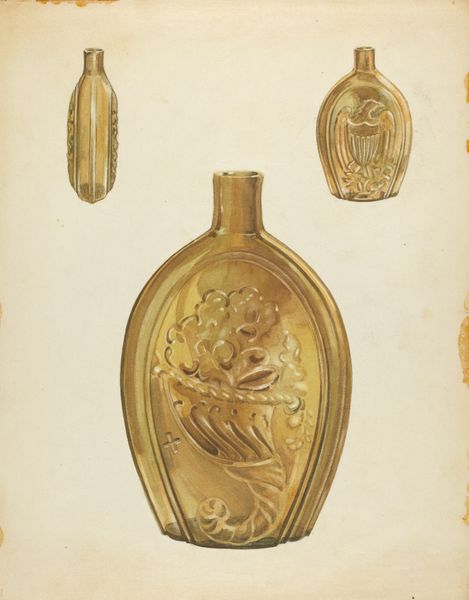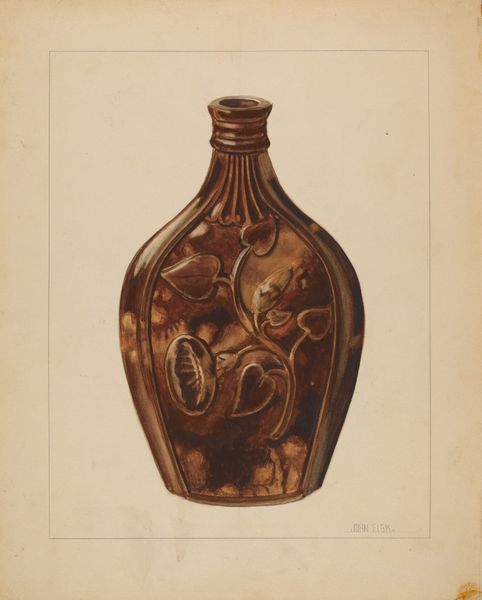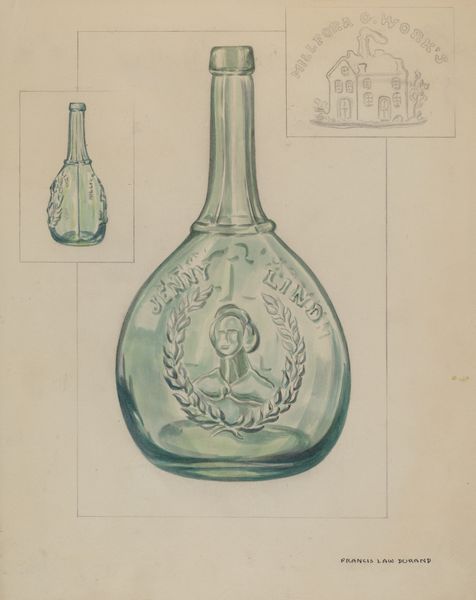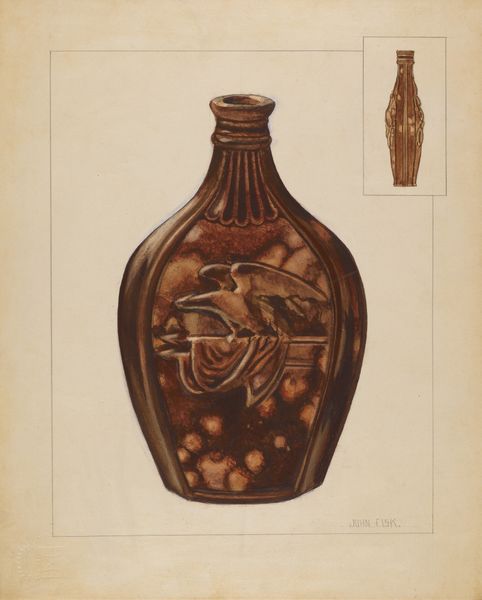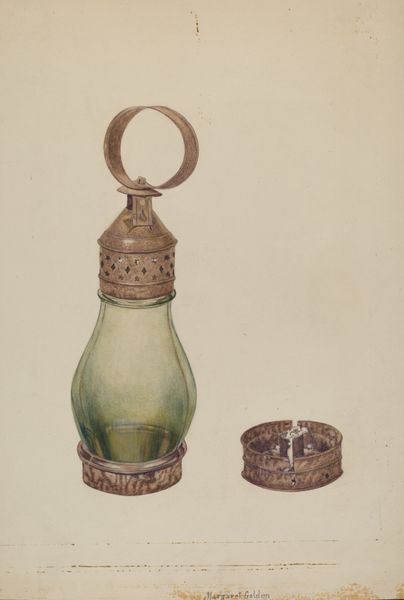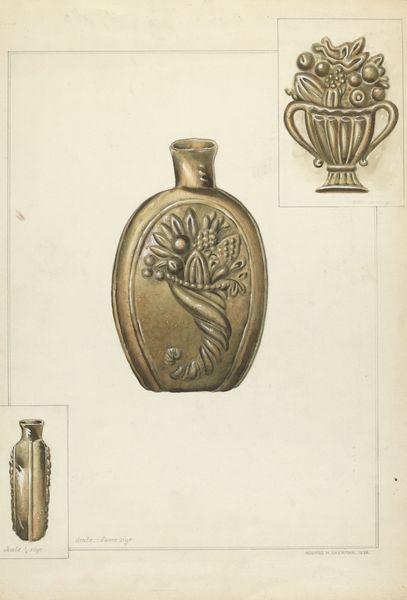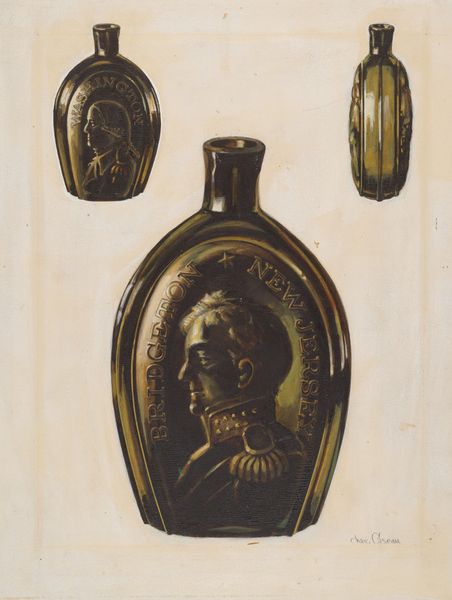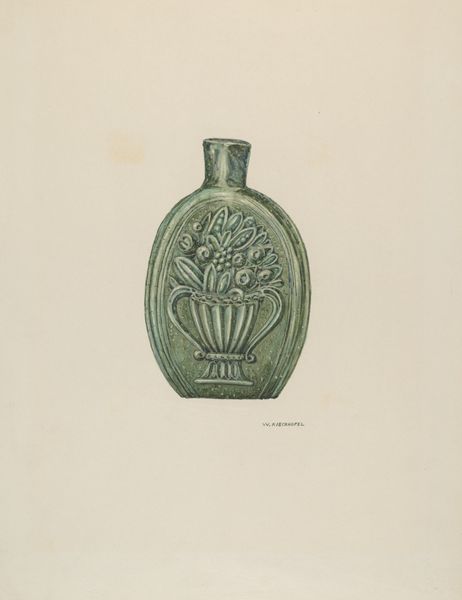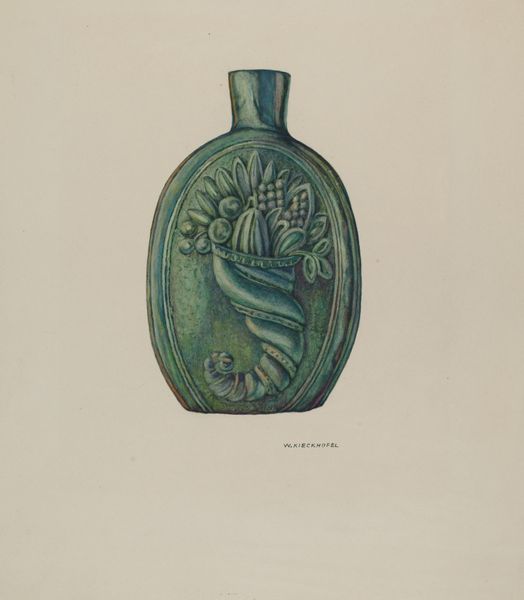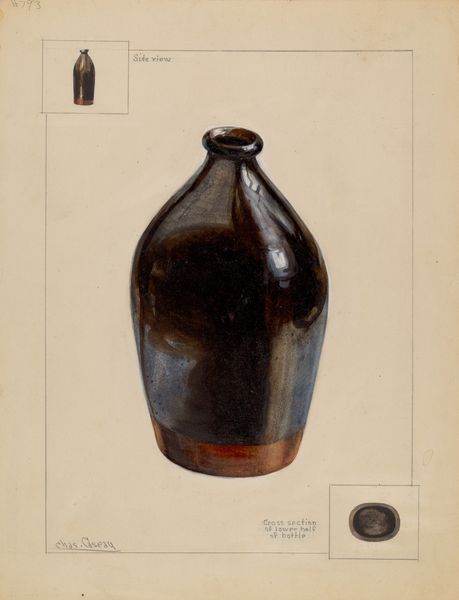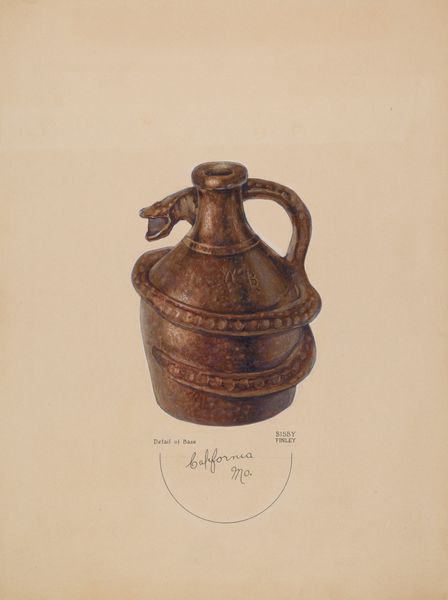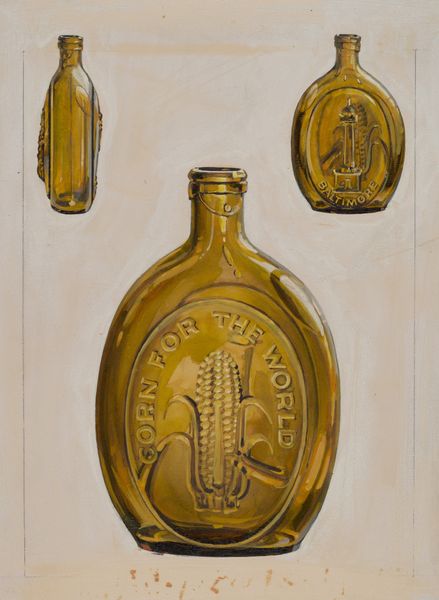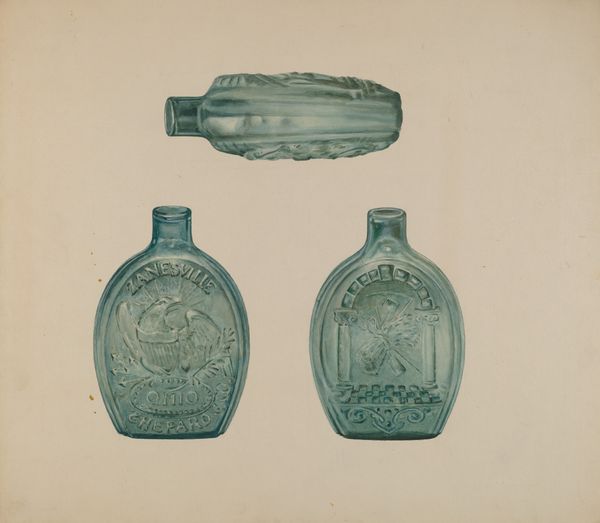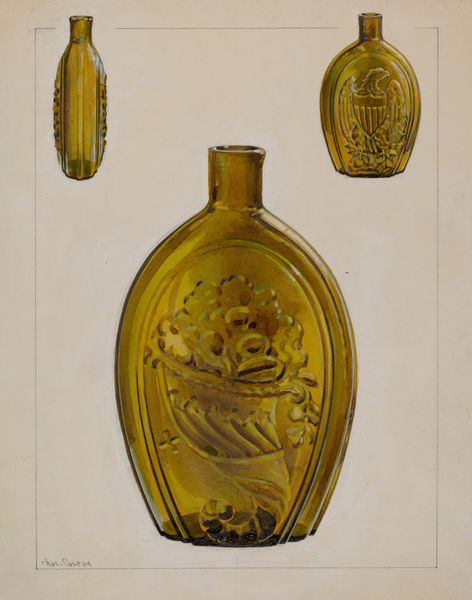
drawing, watercolor
#
drawing
#
water colours
#
oil painting
#
watercolor
#
watercolor
#
realism
Dimensions: overall: 29 x 23 cm (11 7/16 x 9 1/16 in.) Original IAD Object: 7 1/2" High Base 3 1/2" x 1 3/4"
Copyright: National Gallery of Art: CC0 1.0
Editor: This is Charles Caseau's "Liquor Bottle" from 1937, rendered in watercolor and possibly drawing as well. I'm struck by how the artist rendered a simple, utilitarian object with such attention to detail. The tonal variation and intricate ornamentation on the bottle and plaque are fascinating. What do you see in this piece, especially regarding its formal elements? Curator: Initially, the composition arrests the eye; Caseau has carefully arranged three distinct areas, each displaying intricate detail. Note the contrasting sizes of the two flasks. How do these variations in scale impact the viewer's experience? Editor: It makes the larger flask more prominent, I think. It gives it a sort of authority or importance in the still life. Curator: Precisely. Also consider the texture. Caseau skillfully uses watercolor to emulate the sheen of the bottles, but notice how the application is not uniform. Where does the light seem to be originating, and how does that affect your perception of form? Editor: I'd say from the top left, which adds depth and highlights the embossed details. The darker shades elsewhere emphasize the bottle’s curvature. Curator: And that square plaque featuring hunting iconography—observe the deliberate use of a flat plane to offset the roundness of the flasks. What impact does this interplay of shapes have on the composition? Editor: It provides a sort of backdrop that almost frames the main subject. Also, thematically they're all linked through the hunt, or perhaps leisure. Curator: Good point! We see how shape, line, light, and texture create an aesthetically compelling image, inviting deeper exploration without leaning on contextual understanding alone. These are the artist’s formal tools for a rich viewing experience. Editor: This close analysis truly sheds new light on a piece I initially perceived as rather straightforward. I learned to appreciate it in a different way. Curator: Indeed, it serves as a valuable lesson on extracting artistic significance through careful examination of the formal vocabulary present.
Comments
No comments
Be the first to comment and join the conversation on the ultimate creative platform.
